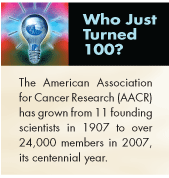Vitamin E-Based Paclitaxel May Be Less Neurotoxic
A novel vitamin E-based paclitaxel emulsion may be less neurotoxic than the currently approved taxanes, including cremophor-based paclitaxel (Taxol), nab-paclitaxel (albumin-bound) (Abraxane), and docetaxel (Taxotere)
LOS ANGELESA novel vitamin E-based paclitaxel emulsion may be less neurotoxic than the currently approved taxanes, including cremophor-based paclitaxel (Taxol), nab-paclitaxel (albumin-bound) (Abraxane), and docetaxel (Taxotere), according to a preclinical study reported at the 2007 American Association for Cancer Research annual meeting (abstract 1563).
The compound, called Tocosol pacli-taxel (Sonus Pharmaceuticals, Bothell, Washington), was evaluated in rats, which are considered a good animal model for taxane-induced peripheral neuropathy. It was compared with the three other taxanes given once a week for 6 weeks, followed by a 4-week recovery period.

All treatments resulted in some degree of peripheral neuropathy, but vitamin E paclitaxel was associated with less nerve fiber degeneration than equivalent doses of the other taxanes, reported Lauren M. Tatalick, DVM, PhD, of Sonus. The vitamin E paclitaxel-treated animals also suffered the least effects in terms of body weight change, roto-rod motor coordination (ability to stay on a rod), and 10-week recovery of sensory nerve conduction velocity (100 mg/m2 dose).
Compared with currently marketed taxane products, vitamin E paclitaxel allows for a shorter infusion time (15 minutes) and requires only minimal preparation prior to administration, Dr. Tatalick said.
Vitamin E paclitaxel is currently being compared with cremophor paclitaxel in a phase III trial of patients with metastatic breast cancer. Enrollment is complete, and adjudicated data are expected in the third quarter of 2007.
Newsletter
Stay up to date on recent advances in the multidisciplinary approach to cancer.